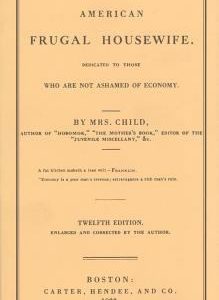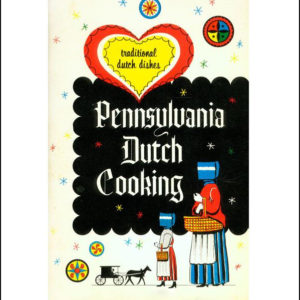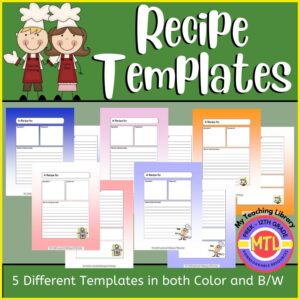Showing all 5 resultsSorted by latest
-
 $3.00Buy Now
$3.00Buy NowFirst published in 1828, Lydia Maria Child’s The American Frugal Housewife was an extremely popular nineteenth-century manual for homemakers. Interesting recipes and remedies, advice on parenting and the myriad responsibilities of housekeeping are all put forth in straightforward, no-nonsense, Yankee prose.
“The true economy of housekeeping is simply the art of gathering up all the fragments, so that nothing be lost. I mean fragments of time, as well as materials. Nothing should be thrown away so long as it is possible to make any use of it, however trifling that use may be; and whatever be the size of a family, every member should be employed either in earning or saving money.“
-
 $2.00Buy Now
$2.00Buy NowThis is a downloadable copy of the book. (74 pages)
About the book: Easy to follow traditional dishes that are relatively simple and unlike most regional cookery the ingredients are readily available!Includes recipes for dishes such as: dumplings (Spaetzle), corn chowder, hot dutch potato salad, cabbage rolls, wiener schnitzel, dutch meat loaf, apple ring fritters, old-fashion flannel cakes, peach fritters
-
 $3.00Buy Now
$3.00Buy NowThis is a downloadable copy of the book. (190 pages) This book may have ‘for a little girl’ in the title but it is for anyone who wants easy to follow recipes!
About the book: Originally published in 1905, culled from the author’s recipes in Good Housekeeping Magazine.
Sections + examples of what is included in each:
– The Things Margaret Made for Breakfast (rice croquettes, poached eggs, birds’ nests, Spanish omelette, corned beef hash)
– The Things She Made for Luncheon or Supper (white or cream sauce, creamed salmon, deviled eggs, shepherd’s pie, orange and grapefruit salad
– The Things She Made for Dinner (cream of potato, tomato soup, creamed cabbage, baked custard, pudding sauces, ice cream) -
 $2.50Buy Now
$2.50Buy NowHere are 5 different recipe templates for your students or children to use to copy or create their favorite recipes! Use at home or in class. Suggested uses: In a Health class when studying nutrition (record or create healthy recipes), any class teaching life skills, in a Home Economics class, or how about using when teaching about different cultures around the world (have students find and record recipes).
-
 $2.50Buy Now
$2.50Buy Now- This is a copy of Margaret Brown’s French Cookery book – Publication date: 1886
It includes a large variety of French recipes from the late 1800’s, written in very simplistic, paragraph form. Recipes from apple cake and corn bread to lobster fritters and rabbit fricassee!Here is an example of how recipes are written:
Peach Sauce.
Place the peach juice from the can into a small saucepan, add an equal volume of water, a little more sugar and 8 or 10 raisins, boil this 10 minutes, strain, and just before serving add 8 drops of extract of bitter almonds.
- This is a copy of Margaret Brown’s French Cookery book – Publication date: 1886

